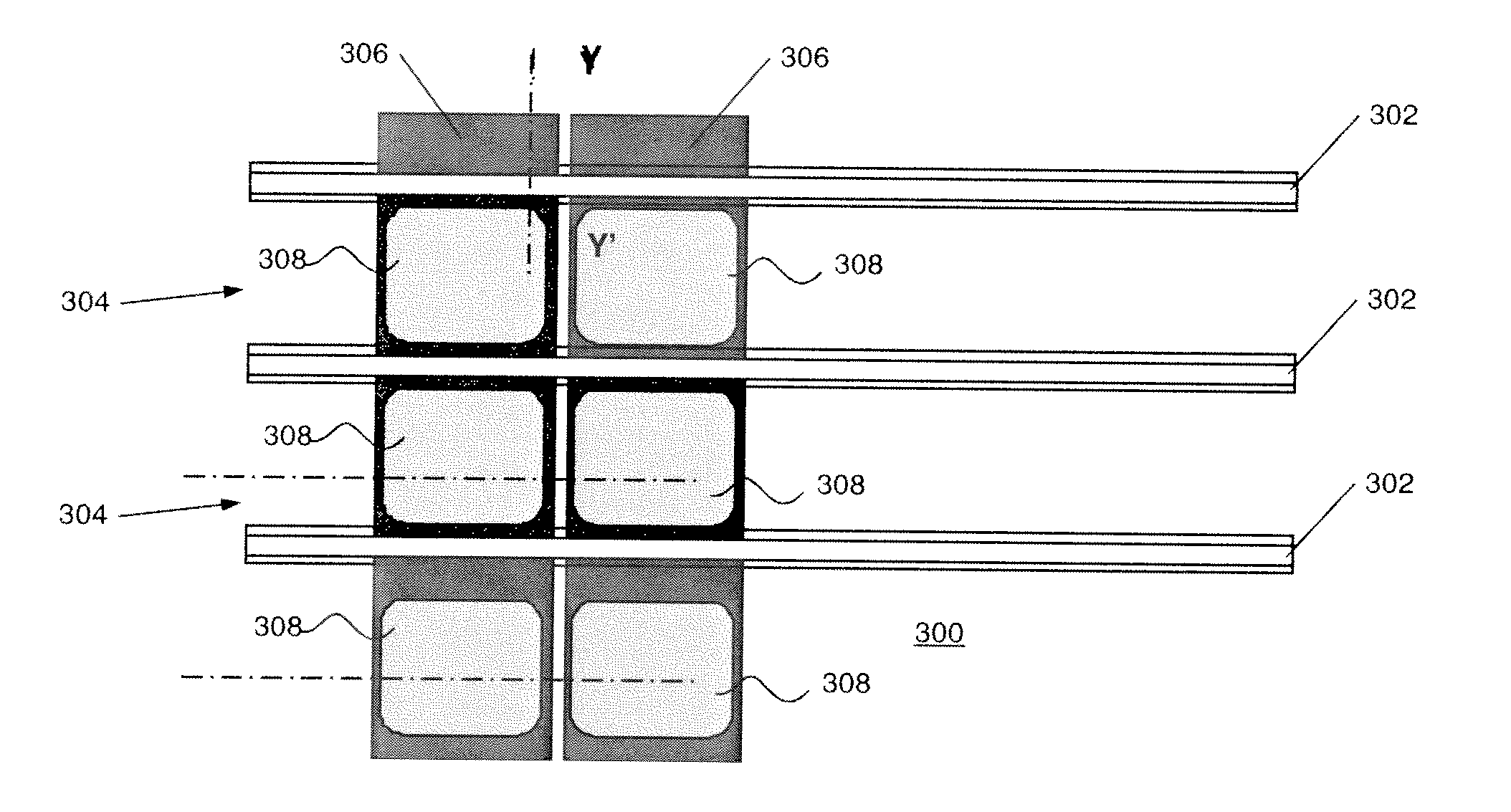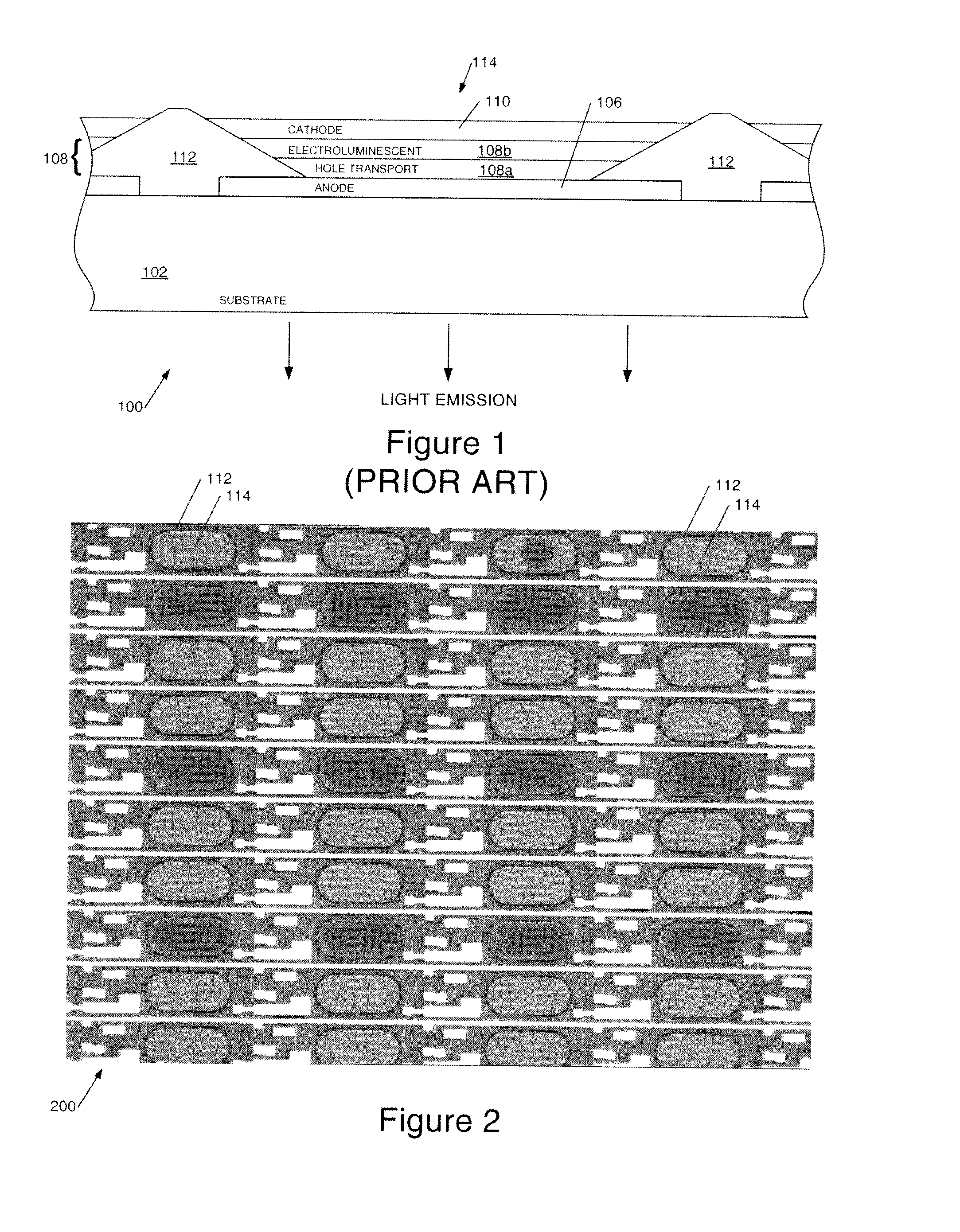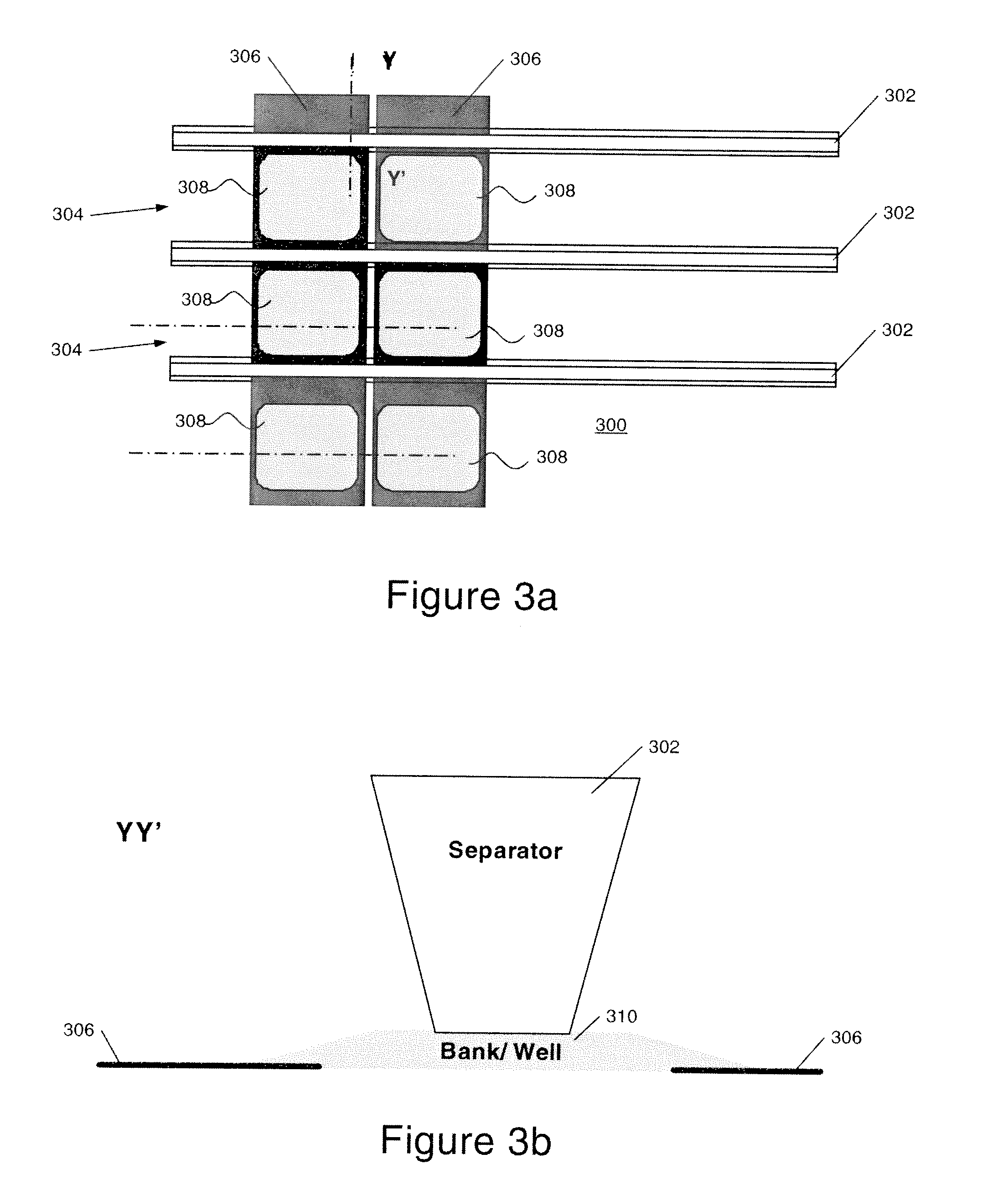Opto-Electrical Devices and Methods of Manufacturing the Same
a technology of opto-electrical devices and organic materials, applied in the direction of non-metal conductors, conductors, thermoelectric devices, etc., can solve the problems of lateral conduction, too high conductivity, and many significant problems, and achieve the effect of less polarity, improved film uniformity, and greater wetting capacity
- Summary
- Abstract
- Description
- Claims
- Application Information
AI Technical Summary
Benefits of technology
Problems solved by technology
Method used
Image
Examples
Embodiment Construction
[0080]The general device architecture is illustrated in FIG. 1 and has been described above.
[0081]The device is preferably encapsulated with an encapsulant (not shown) to prevent ingress of moisture and oxygen. Suitable encapsulants include a sheet of glass, films having suitable barrier properties such as alternating stacks of polymer and dielectric as disclosed in, for example, WO 01 / 81649 or an airtight container as disclosed in, for example, WO 01 / 19142. A getter material for absorption of any atmospheric moisture and / or oxygen that may permeate through the substrate or encapsulant may be disposed between the substrate and the encapsulant.
[0082]Suitable polymers for charge transport and emission may comprise a first repeat unit selected from arylene repeat units, in particular: 1,4-phenylene repeat units as disclosed in J. Appl. Phys. 1996, 79, 934; fluorene repeat units as disclosed in EP 0842208; indenofluorene repeat units as disclosed in, for example, Macromolecules 2000, 33...
PUM
| Property | Measurement | Unit |
|---|---|---|
| boiling point | aaaaa | aaaaa |
| boiling point | aaaaa | aaaaa |
| boiling point | aaaaa | aaaaa |
Abstract
Description
Claims
Application Information
 Login to View More
Login to View More - R&D
- Intellectual Property
- Life Sciences
- Materials
- Tech Scout
- Unparalleled Data Quality
- Higher Quality Content
- 60% Fewer Hallucinations
Browse by: Latest US Patents, China's latest patents, Technical Efficacy Thesaurus, Application Domain, Technology Topic, Popular Technical Reports.
© 2025 PatSnap. All rights reserved.Legal|Privacy policy|Modern Slavery Act Transparency Statement|Sitemap|About US| Contact US: help@patsnap.com



